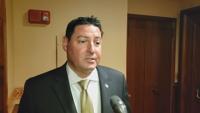(The Center Square) – Illinois is one of a dozen states in the country that are at risk of eliminating or scaling back programs when the federal government’s COVID-19 stimulus package expires in two years.
The Coronavirus State and Local Fiscal Recovery Funds (SLFRF) were handed out to states, cities and counties that saw tax revenues plummet during the pandemic due to government-imposed lockdowns that shut down businesses deemed to be "nonessential."
As detailed in a report by the Volcker Alliance and authored by Beverly Bunch, states must confront the fiscal cliffs they could face if they allocated the recovery aid to recurring programs rather than one-time costs stemming from the pandemic.
“If states had used those one-time funds for recurring costs, they will have to do major cuts to programs and services, and that would be a cliff,” said Bunch.
The report notes that 38 states primarily used the federal money for one-time or short-term purposes, such as capital projects, repaying federal loans to their depleted unemployment trust funds and providing short-term assistance to businesses and households.
But 12 states, including Illinois, were flagged for using the federal funds to cover recurring costs that were equivalent to a significant 2.5% or more of their fiscal 2022 general fund expenditures. As a result, the report said Illinois faces a moderate to elevated risk of encountering that fiscal cliff if it doesn't find money to replace those federal dollars.
“If they are using funds for operational purposes, that will recur, then the risk is what will happen when those funds go away,” said Bunch.
In 2023, Illinois decreased its SLFRF allocation for government operations and increased its allocation to the repayment of federal unemployment insurance trust fund loans.
Among the report’s recommendations are clearly identifying one-time funds for short-term purposes and maintaining sufficient rainy day funds to preserve critical services in the event of sudden revenue losses.
States should also develop long-term revenue and expenditure forecasts, which could address the loss of federal funds.









